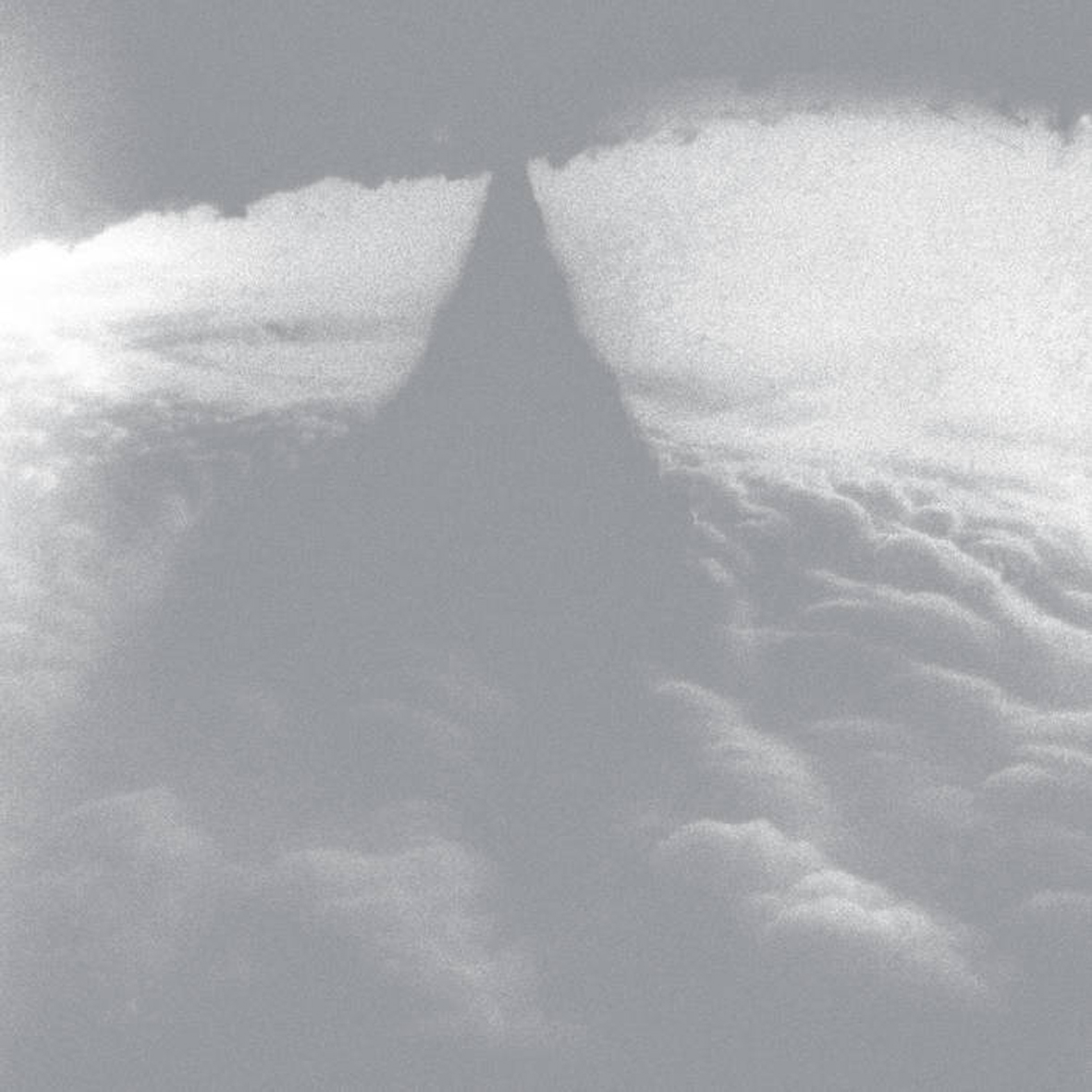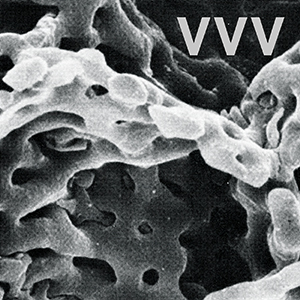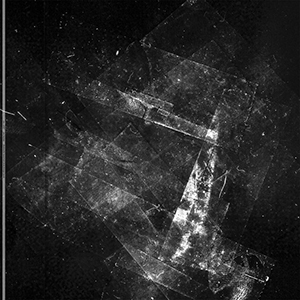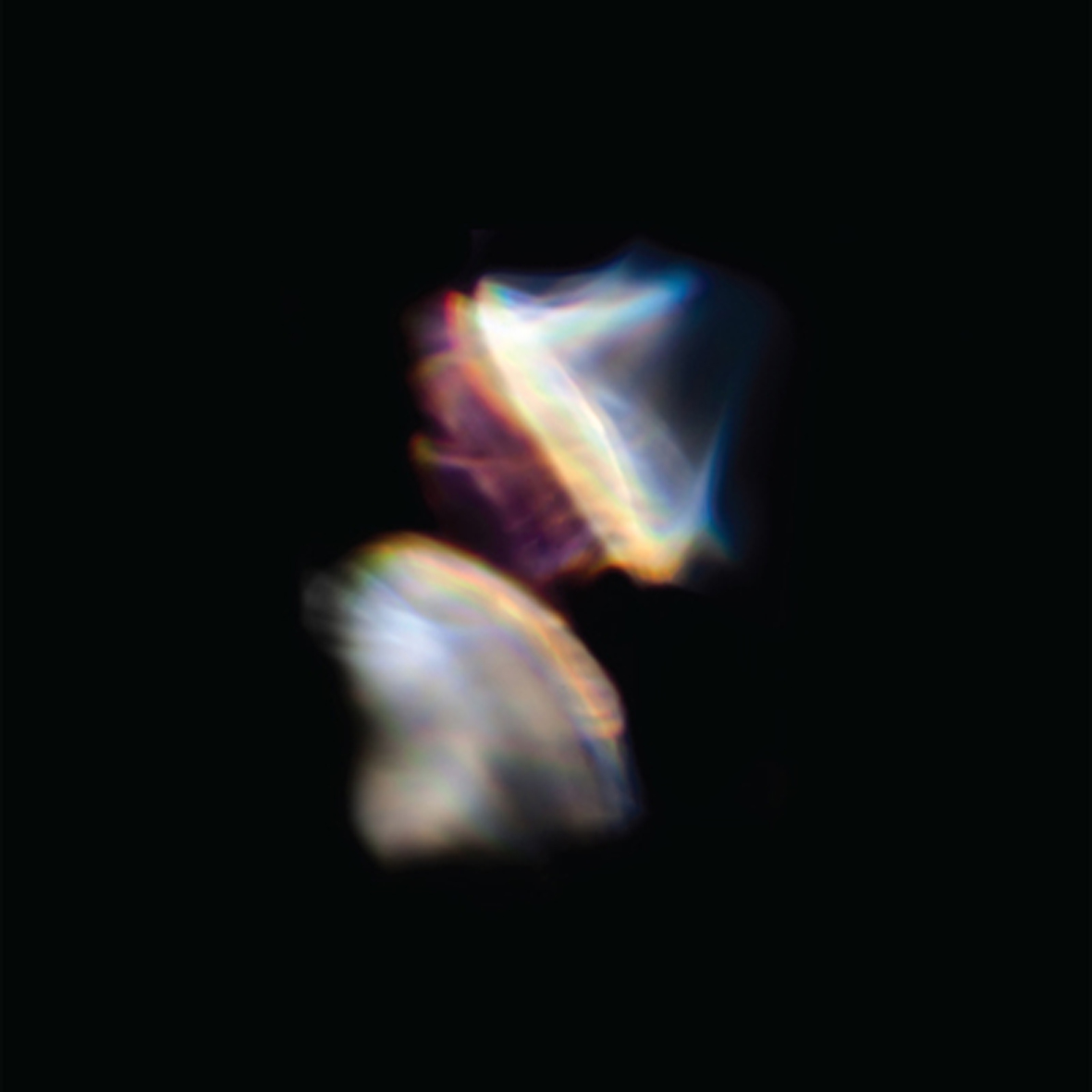 On paper, this is quite an improbable and unexpected collaboration: an iconic and mercurial Japanese noise-guitar god teams up with a pair of serious Belgian jazz musicians.  For one, Keiji Haino generally tends to work with artists that are nearly as outré as himself (My Cat is an Alien, Merzbow, Peter Brötzmann, etc.).  Also, playing with an elemental force as unpredictable and unhinged as Haino seems like it would be roughly as harrowing as riding a bucking bronco for anyone new to his orbit.  To their credit, however, both Verbruggen and Demoulin prove to be inspiring foils and manage to ably follow Haino's muse to whichever strange places it wanders.  Needless to say, this is very much Haino's show, veering wildly between free-form chaos, roiling electronic maelstroms, feral howling, and a few passages of sublime accessibility.  Given that, Miracles is a bit of an overwhelming mixed bag as a whole, but one with some genuine flashes of brilliance inside.
On paper, this is quite an improbable and unexpected collaboration: an iconic and mercurial Japanese noise-guitar god teams up with a pair of serious Belgian jazz musicians.  For one, Keiji Haino generally tends to work with artists that are nearly as outré as himself (My Cat is an Alien, Merzbow, Peter Brötzmann, etc.).  Also, playing with an elemental force as unpredictable and unhinged as Haino seems like it would be roughly as harrowing as riding a bucking bronco for anyone new to his orbit.  To their credit, however, both Verbruggen and Demoulin prove to be inspiring foils and manage to ably follow Haino's muse to whichever strange places it wanders.  Needless to say, this is very much Haino's show, veering wildly between free-form chaos, roiling electronic maelstroms, feral howling, and a few passages of sublime accessibility.  Given that, Miracles is a bit of an overwhelming mixed bag as a whole, but one with some genuine flashes of brilliance inside.
Two new shows just for you. We have squeezed out two extended release episodes for this weekend to get you through this week. They contain mostly new songs but there's also new issues from the vaults. The first show features music from Rider/Horse, Mint Field, Robert Aiki Aubrey Lowe, Anastasia Coope, ISAN, Stone Music, La Securite, Bark Psychosis, Jon Rose, Master Wilburn Burchette, Umberto, Wand, Tim Koh, Sun An, and Memory Drawings. The second episode has music by Laibach, Melt-Banana, Chuck Johnson, X, K. Yoshimatsu, Dorothy Carter, Pavel Milyakov, Violence Gratuite, Mark Templeton, Dummy, Endon, body / negative, Midwife, Alberto Boccardi, Divine. Cow in Maui from Veronika in Vienna. Get involved: subscribe, review, rate, share with your friends, send images! |



 If there has been a running theme throughout Jon Mueller’s career, it would be his exploration of the intersection between sound and spirituality. He has tackled both largely in abstract interpretations: he is a multi-instrumentalist, and has delved into themes and imagery from a multitude of religions and spiritual practices throughout his career as an artist. dHrAaNwDn (Hand Drawn) is perhaps among the most fully realized examples of his passions, however. A stunning double record set, the audio is culled from six hours of improvised percussion performances recorded live in the Shaker Meeting House of Albany, New York, exemplifying not only Mueller’s adeptness at performing, but his ear for recording and capturing environments as well.
If there has been a running theme throughout Jon Mueller’s career, it would be his exploration of the intersection between sound and spirituality. He has tackled both largely in abstract interpretations: he is a multi-instrumentalist, and has delved into themes and imagery from a multitude of religions and spiritual practices throughout his career as an artist. dHrAaNwDn (Hand Drawn) is perhaps among the most fully realized examples of his passions, however. A stunning double record set, the audio is culled from six hours of improvised percussion performances recorded live in the Shaker Meeting House of Albany, New York, exemplifying not only Mueller’s adeptness at performing, but his ear for recording and capturing environments as well. Kevin Tomkins and Paul Taylor’s legendary Sutcliffe Jugend project has alternated between periods of being extremely prolific, followed by utter silence ever since its inception. Their first albums as SJ appeared in 1982, one of which was the legendary 10 tape We Spit On Their Graves, then no new material for 14 years. The pattern has repeated ever since, though admittedly not to the same extremity. S L A V E S, a six CD release, capped off a busy 2016, preceded by three other full length albums. Sprawling is an appropriate term, but it is very well developed, varied, and also makes clear that Tomkins and Taylor have no intent of staying in that narrow box most associate with the project.
Kevin Tomkins and Paul Taylor’s legendary Sutcliffe Jugend project has alternated between periods of being extremely prolific, followed by utter silence ever since its inception. Their first albums as SJ appeared in 1982, one of which was the legendary 10 tape We Spit On Their Graves, then no new material for 14 years. The pattern has repeated ever since, though admittedly not to the same extremity. S L A V E S, a six CD release, capped off a busy 2016, preceded by three other full length albums. Sprawling is an appropriate term, but it is very well developed, varied, and also makes clear that Tomkins and Taylor have no intent of staying in that narrow box most associate with the project.
 Texas duo Steel Hook Prostheses are a decade and a half into their career of blackened electronics and malicious noise, and with each new release they continue to find new spins on their intentionally desolate and unpleasant sound. Calm Morbidity is a consistent, yet diverse record that does different things and goes in varying directions, but never loses focus, and also never lightens the mood.
Texas duo Steel Hook Prostheses are a decade and a half into their career of blackened electronics and malicious noise, and with each new release they continue to find new spins on their intentionally desolate and unpleasant sound. Calm Morbidity is a consistent, yet diverse record that does different things and goes in varying directions, but never loses focus, and also never lightens the mood. David Reed's newest album as Envenomist may be a collection of six songs, but the presentation and consistency between them seems more akin to a long from composition broken into distinct pieces. His bleak analog synthesizer works have been notable as a recent member of Bloodyminded, and as part of the trio Nightmares with Mark Solotroff and Jonathan Canady, but here he is in sole control. Perhaps due to it being a fully solo excursion or his compositional intent, the arrangement is sparse but strong, and the final product is a bleak synthesizer creep that hints at film score but is an entity entirely unto itself.
David Reed's newest album as Envenomist may be a collection of six songs, but the presentation and consistency between them seems more akin to a long from composition broken into distinct pieces. His bleak analog synthesizer works have been notable as a recent member of Bloodyminded, and as part of the trio Nightmares with Mark Solotroff and Jonathan Canady, but here he is in sole control. Perhaps due to it being a fully solo excursion or his compositional intent, the arrangement is sparse but strong, and the final product is a bleak synthesizer creep that hints at film score but is an entity entirely unto itself.
 Alan Courtis (aka Anla Courtis) is one of those composers that at times is occasionally too prolific, spreading himself thin over numerous collaborations and solo works each year. Because of that, his work is sometimes less focused than it could be, simply due to the extreme breadth of what he puts out. However, when one of his releases is obviously a fully realized concept, his work is usually exceptionally compelling.  Los Galpones (The Sheds) is one of his more targeted works, by that standard. A record built upon mostly just guitar and metallic objects, it is a wonderfully unified suite of four distinct pieces that work together perfectly and creates a nuanced sense of post-industrial decay.
Alan Courtis (aka Anla Courtis) is one of those composers that at times is occasionally too prolific, spreading himself thin over numerous collaborations and solo works each year. Because of that, his work is sometimes less focused than it could be, simply due to the extreme breadth of what he puts out. However, when one of his releases is obviously a fully realized concept, his work is usually exceptionally compelling.  Los Galpones (The Sheds) is one of his more targeted works, by that standard. A record built upon mostly just guitar and metallic objects, it is a wonderfully unified suite of four distinct pieces that work together perfectly and creates a nuanced sense of post-industrial decay. For his two most recent (near simultaneous) releases, Jim Haynes has scaled back his audial representation of decay to something a bit colder and more intentionally off-putting. Both albums are largely based on field recordings taken from a residency in Estonia, and capturing the detritus of Soviet era electronics (and some still active) via shortwave and then processing the results. The final products may be somewhat sparser than his other works, but no less fascinating, and with an additional menacing edge.
For his two most recent (near simultaneous) releases, Jim Haynes has scaled back his audial representation of decay to something a bit colder and more intentionally off-putting. Both albums are largely based on field recordings taken from a residency in Estonia, and capturing the detritus of Soviet era electronics (and some still active) via shortwave and then processing the results. The final products may be somewhat sparser than his other works, but no less fascinating, and with an additional menacing edge. Emptyset has always been a project that I felt weirdly guilty about not appreciating more, as they seemed like a more cerebral and mercilessly deconstructed twist on the UK's industrial-damaged post-dance milieu of Raime, Haxan Cloak, and Demdike Stare.  Also, I love James Ginzburg's Subtext label.  Unfortunately, all their songs sounded vaguely the same to me and I found all the praise for their architectural inspirations a bit mystifying.  Yet still I kept optimistically buying each new album hoping for a masterpiece that never arrived.  Thankfully, this debut release for Thrill Jockey finally makes everything click for me.  The same general template as always is still in place (improbably dense, ribcage-rattling bass and a slow-motion kick drum pulse), but Ginzburg and Paul Purgas have now distilled it into a thing of truly bludgeoning elemental force: Borders absolutely explodes from my speakers.  Also, the duo now wield a bass-heavy homemade "zither" to wonderfully visceral and snarling effect, which I did not see coming at all.  I am officially now a convert.
Emptyset has always been a project that I felt weirdly guilty about not appreciating more, as they seemed like a more cerebral and mercilessly deconstructed twist on the UK's industrial-damaged post-dance milieu of Raime, Haxan Cloak, and Demdike Stare.  Also, I love James Ginzburg's Subtext label.  Unfortunately, all their songs sounded vaguely the same to me and I found all the praise for their architectural inspirations a bit mystifying.  Yet still I kept optimistically buying each new album hoping for a masterpiece that never arrived.  Thankfully, this debut release for Thrill Jockey finally makes everything click for me.  The same general template as always is still in place (improbably dense, ribcage-rattling bass and a slow-motion kick drum pulse), but Ginzburg and Paul Purgas have now distilled it into a thing of truly bludgeoning elemental force: Borders absolutely explodes from my speakers.  Also, the duo now wield a bass-heavy homemade "zither" to wonderfully visceral and snarling effect, which I did not see coming at all.  I am officially now a convert.
